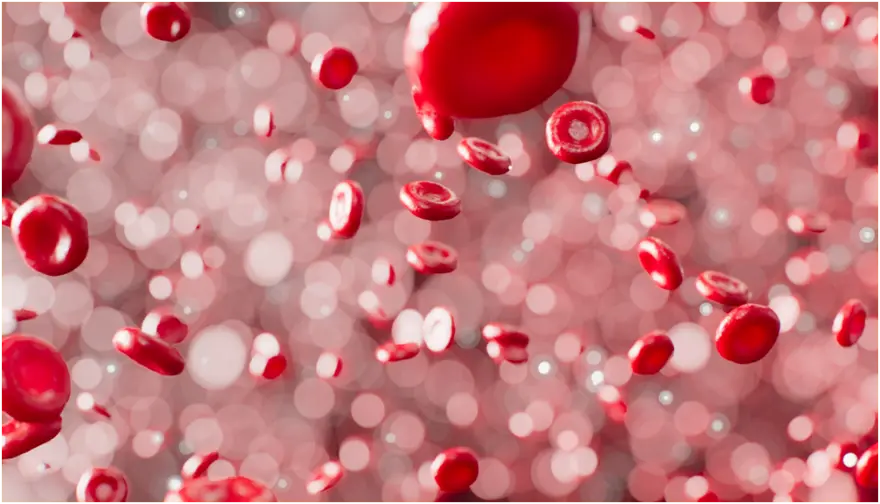Preventive Healthcare
Understanding Red Blood Cells: Count and Functions
13646 Views
0

What are Red Blood Cells?
Red blood cells, or erythrocytes, are fundamental parts of our circulatory framework. They transport oxygen from the lungs to all pieces of the body and assist in eliminating carbon dioxide. Observing red platelet count is vital to know the conditions like weakness or polycythemia.
What do Red Blood Cells Do?
Red blood cells play a fundamental part in our bodies. The essential function of RBC is to move oxygen from the lungs to tissues and organs while eliminating carbon dioxide squandering. This function of RBC guarantees legitimate oxygenation and supports cell capability, keeping up with the body's well-being.
Do Red Blood Cells Carry Oxygen?
Yes, red blood cell count conveys oxygen from the lungs to all body pieces to ensure appropriate oxygenation for cell capability and to keep up with general well-being.
Where Are Red Blood Cells Made?
Red blood cells are principally created in the bone marrow, explicitly in the elastic tissue tracked down inside specific bones. The bone marrow constantly makes another number of red blood cells to keep a steady number in the body. This interaction guarantees the body has an adequate inventory of red platelets to convey oxygen and eliminate carbon dioxide squandering.
What Do Red Blood Cells Look Like?
Red blood cells are little, circle-formed cells that miss the mark on the core. They have a particular biconcave shape, looking like a smoothed doughnut. Their red variety comes from a protein called haemoglobin, which ties with oxygen. Under a magnifying lens, red blood cells appear round, smooth, and uniform designs, around 7 to 8 micrometres in breadth. Their adaptable construction permits them to handily move through limited veins and transfer oxygen to tissues throughout the body. Red blood cells are fundamental in keeping up with well-being and oxygenation.
What Are Red Blood Cells Made Of?
Red blood cells comprise a protein called haemoglobin, which ties to and conveys oxygen particles. They likewise contain limited quantities of different proteins, lipids, and sugars. The exciting arrangement of RBCs permits them to move oxygen all through the body effectively.
What are the common conditions that affect red blood cells?
A few normal circumstances can influence RBC. One such condition is iron deficiency, which happens when there is a decline in red platelets or a decrease in haemoglobin in the blood. One more condition is polycythemia, which is portrayed by an expansion in the number of red blood cells.
Sickle cell infection is a hereditary problem that influences the red blood cells' normal range, making them convert to bow-moulded rather than their standard biconcave shape. Thalassemia is one more hereditary problem that affects the creation of haemoglobin, prompting a decrease in the average RBC count by age.
Lack of iron is a typical reason for low red blood cell count. It happens when the body needs more iron to deliver haemoglobin. Vitamin B12 and folate insufficiencies can likewise prompt a decrease in RBC development.
Certain ongoing infections, like kidney and liver sickness, can influence red blood cell creation and lead to paleness. Blood misfortune because of injury, medical procedure, or feminine cycle can likewise lessen red platelet count.
What are common symptoms of red blood cell conditions?
Common red blood cell conditions symptoms include pallor, weariness, shortcoming, windedness, fair skin, and instability. Side effects include quick heartbeat, chest agony, and trouble concentrating.
What Causes a Low Red Blood Cell Count?
A low red blood cell count, or paleness, can be brought about by different elements, including healthful lacks, ongoing infections, hereditary problems, blood misfortune, and specific prescriptions or medicines.
What Causes a High Red Blood Cell Count?
A high red blood cell count, or polycythemia, can be brought about by conditions, for example, drying out, lung infections, certain malignant growths, bone marrow problems, and hereditary changes. It can likewise be a consequence of living at high elevations.
What are common tests to check the health of my red blood cells?
To check the well-being of RBC, standard tests incorporate a complete blood count (CBC), which estimates the number of red blood cells, haemoglobin levels, hematocrit, and different boundaries. Extra tests might incorporate iron investigations and fringe blood smear assessment.
What is a Normal Red Blood Cell Count?
An average red blood cell count varies depending on age, sex, and overall health. A normal RBC level in adult males is typically 4.5 to 5.5 million cells per microliter of blood. The RBC normal range in females is usually 4.0 to 5.0 million red blood cells per microliter of blood. It is important to note that the normal RBC levels may differ slightly depending on the specific laboratory's reference values.
What are common treatments for red blood cell disorders?
Common treatments for red blood cell disorders depend on the specific condition. For anaemia, treatment may involve iron supplements, vitamin B12 injections, or blood transfusions. In cases of polycythaemia, treatment may include therapeutic phlebotomy to remove excess red blood cells and bring them to normal RBC levels. Other treatments may involve managing underlying conditions like kidney disease or bone marrow disorders. In some instances, medications like immune suppressants or chemotherapy may be prescribed.
How do I Take Care of My Red Blood Cells?
To care for your red blood cells:
- Maintain a balanced diet rich in iron, folate, and vitamin B12.
- Stay hydrated, exercise regularly, and avoid smoking.
- Manage chronic conditions, such as diabetes or kidney disease.
- Get regular checkups, and follow your healthcare provider's recommendations for managing any underlying issues affecting your red blood cell count.
What Is Haemoglobin Within Red Blood Cells?
Haemoglobin is a protein found in red blood cells that carries oxygen from the lungs to the body's tissues and helps transport carbon dioxide back to the lungs for exhalation. It plays a vital role in maintaining the oxygen-carrying capacity of red blood cells.
What Are Interesting Facts About Red Blood Cells?
Red blood cells, or erythrocytes, are the most crucial components of our blood. They lack a nucleus, enabling them to carry more oxygen. Each drop of blood contains around 25 trillion red blood cells. Their lifespan is about 120 days, after which new ones replace them. The normal RBC level is about 20-30 trillion red blood cells in adults.
Conclusion
Red blood cells are vital for our well-being, ensuring proper oxygen transport throughout the body. Maintaining a healthy RBC normal range for females and males is crucial for optimal health.
Knowing your red blood cell count is crucial in case of any red blood cell disorder. Contact us at Metropolis Labs to get all your tests done. Our lab has branches all over India, and you might find the lab near your location. You can also request for home sample collection and collect your reports online.























 WhatsApp
WhatsApp